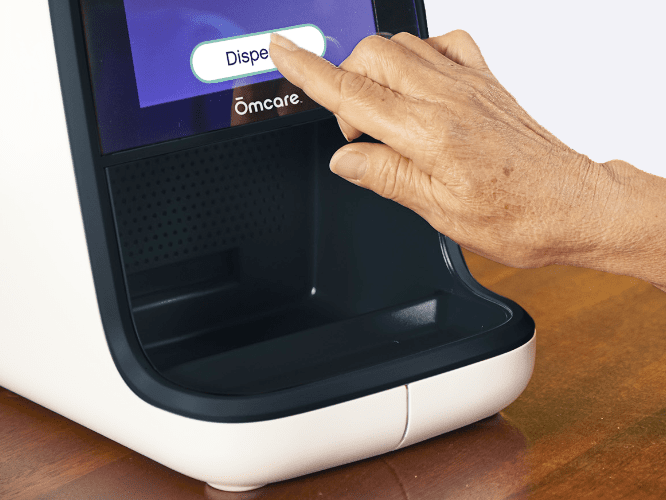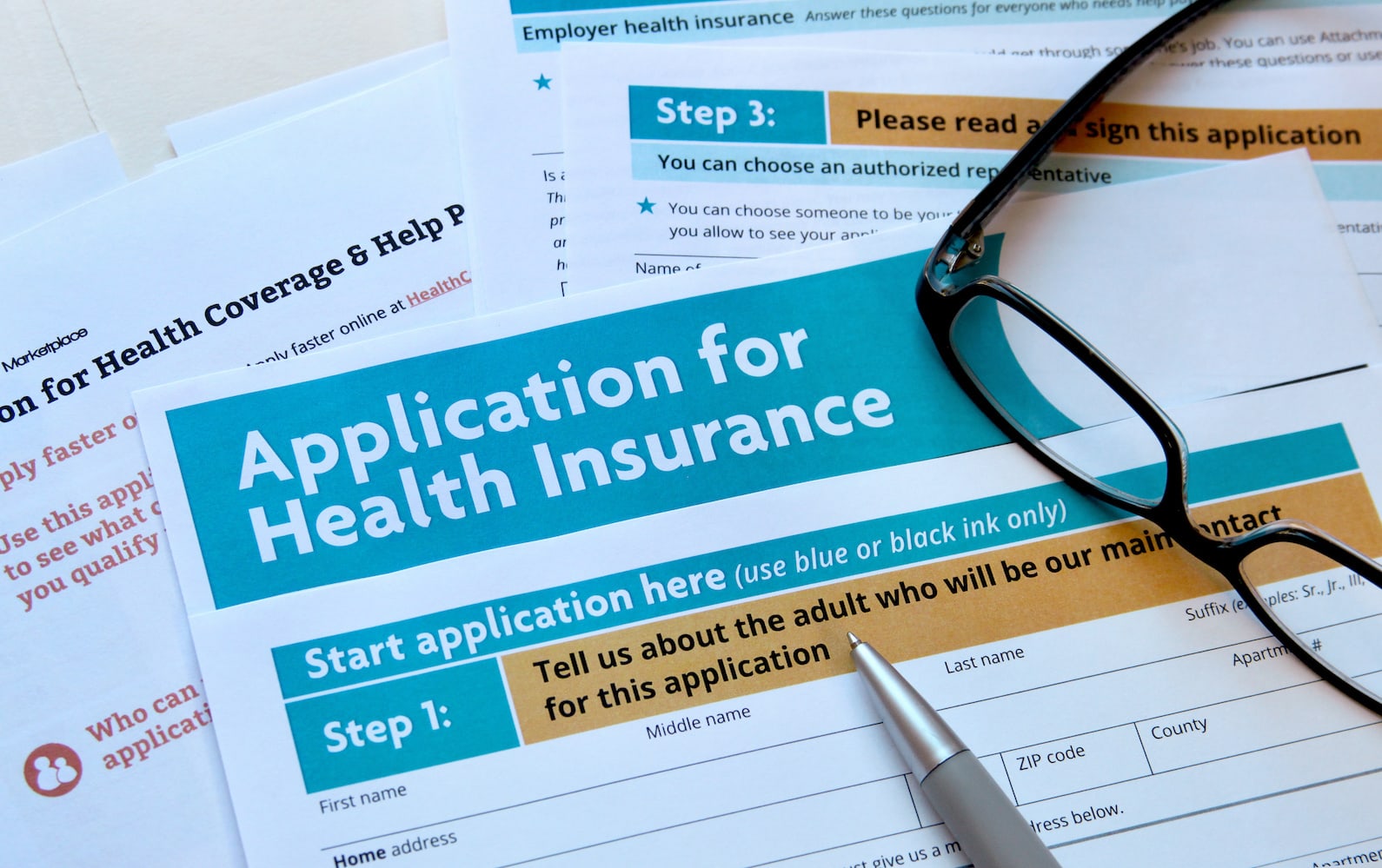Is AI taking the place of in-person medication reminders?
Artificial Intelligence (AI) is being used by healthcare providers to better understand the effectiveness of prescribed drugs to treat a health disorder. It is also being used to better understand whether an individual patient is likely to forget to take a prescribed drug. The problem of forgetting to take a prescribed daily medication (or take it correctly) has huge implications. This is especially so for seniors with chronic health disorders. For example, not taking daily blood pressure (BP) medication to control high BP can lead to a spike in BP. In turn, this can result in a stroke. Therefore, knowing which patients need medication reminders and/or are likely to fail to take their prescribed medications is critical.
How senior-aged adults typically receive in-person medication reminders
The following are four customary ways that seniors receive “in-person” reminders to take their prescribed daily medications:
- Reminder from a spouse or other family member living in the same home with the older-aged person.
- Visits and/or phone calls from a family member or other loved one.
- Follow-up phone calls to a patient from a primary care doctor and/or neighborhood drugstore to check whether that person is taking a specific prescribed medication.
- Reminders during a scheduled visit by a paid caregiver such as a home health aide.
Relying on other people for reminders at any age can be risky, but it can be especially unreliable for senior-aged adults. Problematically, at least 27% of senior-aged adults live alone, the majority have no nearby adult children, and many married elderly people have a spouse with dementia. The problem of forgetting to take prescribed drugs and/or not taking them as physician-instructed (termed nonadherence) is especially found in older-aged adults who take multiple medications, according to a Journal of Family Medicine and Primary Care article.
Can AI enable improved medication understanding and patient adherence?
It is widely recognized among Health Information Technology (HIT) researchers that the huge patient datasets used by Artificial Intelligence (AI) can determine far more rapidly than healthcare providers or medical researchers:
- Whether a specific medication is more likely to manage a chronic health disorder (such as high blood pressure) in patients based on characteristics such as age, when compared to a different drug.
- Whether patients with certain health disorders are more likely to forget taking a prescribed daily drug, take it at the wrong time of day, or take too many (or too few) daily doses.
- Whether patients with a past history of nonadherence to prescribed medication are more likely to be nonadherent to a new prescribed medication, as based on the reason for the past nonadherence.
How AI medication reminders powered are delivered to patients
An ever-increasing number of physician practices, healthcare systems, pharmacies, and insurance companies are utilizing AI-powered medication-reminder apps to contact patients. That contact is most often made to the recipient’s landline or smartphone in the form of an automated phone call. Meanwhile, smartphones and other digital devices can (and do) receive additional reminders via email and text, based on the patient’s preference.
The reason for the booming AI medication-reminder trend
The primary reason AI-powered medication reminders have caught on so quickly among clinicians, pharmacists, and insurers (such as Medicare Advantage plans) is that a tremendous amount of staff time and energy is required to deliver a personal medication reminder to every patient that needs these reminders. However – while automated medication reminders can improve patient medication adherence – an article in Preventive Medicine concluded that interactive medication reminders are the most effective at increasing medication adherence.
Unlike automated reminders, interactive reminders can enable patients to ask questions and receive immediate answers about their prescribed medications. Therefore, an increased utilization of AI-powered chatbots (that simulate conversation) to answer patients’ medication questions is occurring. In this way, senior-aged patients taking multiple daily medications are less likely to skip taking one of their daily pills, get their dosages mixed up, and not understand the importance of taking each of the medications for their overall health.
As an increasing percentage of senior-aged adults acquire smartphones and other digital devices, AI is likely to take the place of in-person medication reminders on the part of healthcare providers, pharmacies, and insurance companies. That is a good thing since many people – and especially senior-aged people – still do not receive the frequent medication reminders they need to ensure proper adherence.
Managing the rising costs of healthcare: Your Medicare options
Medicare coverage is aimed at adults aged 65 and older, as well as younger disabled adults. While some senior-aged people are not insured by Medicare, it has enabled most adults aged 65+ in the US to acquire health insurance coverage. There are four distinct parts to this federal health insurance program administered by the Centers for Medicare and Medicaid Services (CMS), and these are Parts A, B, C, and D. Unlike Parts A and B, Medicare Advantage health insurance (Part C) is administered by private health insurance companies through CMS subcontracts. Meanwhile, Part D covers prescription medications (and is also offered by private insurers). For this reason, enrolling or switching coverage options can be extremely confusing for most adults.
Enrolling in Part A versus Part B
Original Medicare’s Part A covers primarily hospitalization, whereas Part B covers outpatient healthcare visits. At three months prior to becoming 65 years of age, a senior can enroll in Original Medicare (and coverage then becomes effective at age 65). Part A enrollment does not result in a monthly premium cost for most seniors, so it makes sense to enroll unless covered by some other health insurance. While Part B does have a premium cost linked to it, coverage via this part can make a huge financial difference since most seniors need outpatient medical care even more than younger adults. Since Parts A and B do not cover all healthcare costs, it is important to plan for future medical bills upon needing either inpatient or outpatient services. For example, both Parts A and B have annual deductibles that must be met before Medicare covers the rest of the billed dollar amount.
Understanding Part A costs for the hospitalized enrollee
The deductible for Part A is $1,600 per benefit period in 2023. Besides factoring in this cost as something that is the enrollee’s financial responsibility, it is crucial to realize that the enrollee’s cost is $0 through Day 60 of the hospitalization, but increases to $400 per day for Days 61-90 (with a maximum out-of-pocket cost that may be changed annually by the CMS). The average (mean) hospital stay in the US is 4.7 days, with a mean total cost of $11,700 per day. Thus, a lack of health insurance can quickly lead to a tremendous debt-load for an adult in the US.
Part B co-insurance and deductible costs
Part B costs more for enrollees above a specified annual income threshold. However, $164.90 was noted by the Medicare.gov website as the typical monthly deductible cost for 2023. Furthermore, Part B covers only around 80% of the billed amount for each outpatient visit or service, so 20% of the cost is the responsibility of the Medicare-enrolled senior. On the other hand, Part B does not require the enrollee to have a Primary Care Physician (PCP) and allows the enrollee to receive Medicare-covered care from any doctor that accepts Medicare.
Original Medicare versus Medicare Advantage
The Kaiser Family Foundation (KFF) in 2022 reported that enrollment in Medicare Advantage has continued to grow over the past 20 years, and around 48% of Medicare beneficiaries are now enrolled in a Medicare Advantage plan. Although most Medicare Advantage plans include prescription drug coverage, they also usually limit the choice of physicians and hospitals to those that are “in-network” (plus include selecting an “in-network” PCP). However, many Medicare Advantage plans include dental coverage (which is not an included benefit under Original Medicare). Yet others include reimbursement for taxi rides to physician appointments, optometry exams, and annual gym memberships. If choosing to enroll in a Medicare Advantage plan, the enrollee still needs to pay the monthly cost of Original Medicare’s Part B – even though those covered services are already included in the Medicare Advantage plan.
Comparing the cost of different Medicare Advantage Plans
Monthly premiums and annual deductible costs differ tremendously between Medicare Advantage plans. While there are plans with no monthly premiums at all, these often have higher annual deductibles. More than 4,000 Medicare Advantage plans nationwide were offered to seniors in 2023. Since the CMS rates Medicare Advantage plans for enrollee satisfaction on a scale of 1-5 (as well as Part D drug plans), checking the CMS “star” rating for a Medicare Advantage plan can help a senior to determine whether to enroll in that particular plan or a different one.
Supplemental (Medigap) Plans, Part D Plans, and Travel Health Insurance
Due to the diverse costs accruable to people enrolled in Original Medicare, many seniors enrolled in Medicare’s Parts A, B, and D choose to also buy supplemental (Medigap) insurance. This is offered by private insurance companies, and can cover the deductibles and co-insurance not normally covered by Original Medicare. The monthly cost of a Medigap plan varies, but generally depends upon how much of the uncovered costs will be paid by the Medigap plan. As of 2018, 34% of people covered by Original Medicare purchased supplemental (Medigap) insurance. (If enrolled in a Medicare Advantage plan, the CMS disallows simultaneous enrollment in a Medigap plan.)
Similar to the diversity of Medicare Advantage and Medigap plans, there are a huge number of Part D drug plans offered by private insurance companies to seniors. The determination of which is best depends upon the financial circumstances, usual daily medications, and pharmacy preferences of the senior. Monthly premiums and annual deductibles differ between Part D drug plans, and the cost of a monthly prescription of a specific drug can also differ widely between plans.
For a senior that lives for a few months each year somewhere other than the state of permanent residential address, Original Medicare may be preferable. On the other hand, a senior taking a three-week vacation overseas – especially if afflicted with a chronic health condition such as diabetes – may find that purchasing travel insurance (which is not included in Medicare coverage) may be a good idea.
Telehealth coverage and medicare
Consequent to the federal Covid-19 public health emergency declaration, telehealth “virtual” medical visits are covered by Medicare through December 31, 2024. Many Medicare Advantage plans have broader coverage for utilizing telehealth than Original Medicare. Additionally, an ever greater number of Medicare Advantage plans are covering the cost of digital devices and wearables for patient monitoring and telehealth visits. Since the CMS does not include language in its Original Medicare parameters that expressly covers digital health technology, a Health News article in 2023 concludes that such technology is more likely to be covered by Medicare Advantage plans than Original Medicare.
Consider purchasing the Ōmcare Home Health Hub® to enable remaining in the home environment in later life, rather than relocation to a Skilled Nursing Facility (SNF) or elsewhere.
Changes for Medicare Advantage in 2023
Every year, Medicare Advantage plans change slightly. These changes can be confusing, which is why we’ll be explaining all the Medicare Advantage changes you’ll experience in 2023.
First, what is Medicare Advantage?
Medicare is federally-funded health insurance, designed to get you the care you need at a lower cost. Medicare Advantage gets you more coverage than Original Medicare—for example, your Medicare Advantage plan will often cover prescription drugs, while Original Medicare plans won’t.
What do Medicare Advantage plans typically cover?
Medicare Advantage usually covers all three Medicare Parts:
- Medicare Part A: Covers hospitalizations. You usually won’t pay a premium for this, however, there’s a small chance you won’t qualify for premium-free Part A. If that’s the case, you can purchase premium-free Part A.
- Medicare Part B: Covers medical insurance (non-emergency). Every Medicare Advantage enrollee pays a monthly premium for Part B.
- Medicare Part D: Covers prescription drugs. Only some Medicare Advantage plans offer this coverage.
Medicare Advantage changes in 2023
Here are the changes to Medicare Advantage plans that you should be aware of:
1. Cost
In 2022, the average Medicare Advantage enrollee paid $19 per month. In 2023, the average monthly premium for Medicare Advantage enrollees is decreasing to $18 per month. This means you’ll be paying less for the same great coverage.
The lower costs are a result of the Biden-Harris Administration and its efforts to make healthcare more affordable. “Thanks to President Biden’s Inflation Reduction Act, millions of Medicare enrollees will have lower prescription drug costs and improved benefits when they sign up this year,” said HHS Secretary Xavier Becerra.
2. Maximum out-of-pocket limit (MOOP)
In 2023, the Medicare Advantage maximum out-of-pocket limit (MOOP) will increase to $8,300, from $7,550 in 2022. This means that after you spend $8,300 on Medicare services, your plan will cover the rest of your covered care costs for the rest of the year.
However, most Medicare Advantage plans have lower out-of-pocket limits than the established maximum. Ask your insurer what your out-of-pocket limit is.
3. Expansion
Depending on what state you live in, your access to Medicare Advantage plans are limited. This may have caused problems for you in the past, but in 2023, five major Medicare insurers are planning to expand into new states and counties. You’ll have new options from:
- Aetna
- Cigna
- Elevance Health (which used to be known as Anthem Inc.)
- Humana
- UnitedHealthcare
The expansion of Medicare Advantage insurers will help more people get great coverage.
4. Drug coverage
If your prescription drugs are covered, you’ll see a two important changes to your coverage in 2023:
- For certain types of insulin, you’ll pay no more than $35 per month.
- The Advisory Committee on Immunization Practices (ACIP) recommends certain vaccines, and all of these will be free. These include: COVID-19, HPV, measles, polio, smallpox, and more.
With the changes to Medicare Advantage drug coverage, you can expect to save money.
Quick summary
Here’s a summary of all the 2023 Medicare Advantage changes:
- The average monthly premium will be $18.
- The maximum-out-of-pocket limit is increasing to $8,300.
- Medicare Advantage plans will be offered in more states and counties.
- Insulin costs will be capped.
- Recommended vaccines will be free.
Ōmcare engages with Medicare plans
Ōmcare is actively engaging with Medicare Advantage plans to help bring technology into your home as part of the costs you already pay. Our goals are to increase healthcare access, improve health outcomes, and maximize care for what you already pay.
Learn more about how we partner.
What is Medigap, and does it cover prescriptions?
If you’re worried about affording your healthcare costs, you’re not alone. 37% of adults age 65 and older are concerned that they won’t be able to afford their healthcare expenses within the next year. As the cost of care rises, it’s wise to consider all the insurance options available to you — including Medigap.
Today, we’ll help you understand what Medigap is, how it can help you manage healthcare costs, and whether or not it pays for prescription drugs.
Understanding Medigap: What is it?
Medigap is also known as a Medicare Supplement, because it can help you pay for healthcare expenses that aren’t covered by Original Medicare. Medicare writes that Medigap “helps fill ‘gaps’ in Original Medicare and is sold by private companies.” Some of these gaps include:
- Copayments
- Coinsurance
- Deductibles
To have these expenses covered, enroll in a Medigap policy on top of your Original Medicare policy. You can buy a policy from any insurance provider that’s licensed to sell in your state, but you and your spouse will need your own separate Medigap policies.
Does Medigap cover prescription drugs?
While Medigap helps you pay for some healthcare costs, it doesn’t help you pay for all of them. Most Medigap policies will not pay for any of your prescription drugs and medications.
Medigap doesn’t cover prescription drugs.
Since Medigap won’t help you pay for your medications, it is not the best option if you have a condition that requires you to take a lot of prescriptions. Likewise, if your prescriptions are really expensive, Medigap is not the best option for you.
On the flip side, if you don’t have many monthly medications, or your medications aren’t too expensive, a Medigap policy may be perfect for you.
Other options: Paying for for prescription drugs
If you do need expensive prescription drugs on a regular basis, Medigap won’t help. But this isn’t a dead end—other insurance options can help you pay for your monthly medications.
Here are some other insurance options to consider:
- Coverage from a former employer or union.
- Medicaid, which provides healthcare assistance to people with limited income and resources. Medicaid can help you pay for your medications, but it does depend on what state you live in.
- Medicare Advantage, which covers more healthcare costs than Original Medicare. Some plans offer Part D coverage, which means it will pay for your prescription drugs.
If you do decide to go with a Medicare Advantage policy, you can’t buy and won’t need Medigap.
Quick Summary
We’ve just covered a lot of confusing information. Here is a quick summary of it:
- A Medigap policy can help you pay for healthcare expenses that Medicare doesn’t—including copayments, coinsurance, and deductibles.
- A Medigap policy won’t help you pay for prescription drugs.
- If you need pricey prescriptions on a regular basis, some Medicare Advantage will cover the costs for you.
Ōmcare engages with Medicare plans
Ōmcare is actively engaging with Medicare plans to help bring technology into your home as part of the costs you already pay. Our goals are to:
- Increase healthcare access
- Improve health outcomes
- Reduce costs
Learn more about how we partner.
4 top technological solutions to improve medication adherence for Medicare Advantage
55% of senior patients are noncompliant with their medication schedules, which is an issue for Medicare Advantage plans given 41% of the Star Rating depends on beneficiaries properly taking their medicine—especially medications for diabetes, cholesterol, and hypertension.
Having a high Star Rating is key to earning more enrollees—90% of Medicare beneficiaries are enrolled in a plan with a 4.0 rating or above. Focus on improving medication adherence to positively impact your plan’s Star Rating.
To improve medication adherence, we first have to understand why seniors aren’t taking their medicine properly.
Understanding the reasons behind medication non-adherence
Some of the top reasons for medication non-adherence include:
- Forgetfulness: This is the cause in 63% of cases.
- Complex regimen: Having too many medications to manage.
- Medication schedule is too confusing: 36% of U.S. adults struggle to understand medical terms.
- Hassle of refilling prescriptions: In one study, 20% of patients didn’t renew their prescriptions on time, and another 10% put off refilling their prescriptions.
What do all of these reasons for non-adherence have in common? They have solutions—especially cost-effective technology that takes the burden off healthcare teams. Here are the top technological solutions to help Medical Advantage plans improve medication adherence.
Technology helps seniors take their medicine properly
1. Platform to virtually connect patients to providers
Virtual appointments and messaging systems help patients easily refill their prescriptions. Using online communications, patients avoid an unnecessary trip into the doctor’s office—and this saves time for busy healthcare providers, too.
If you’re worried that telehealth will cause a decline in quality care, don’t be. 82% of patients say that telehealth is just as effective as in-person care. After connecting online, patients can have medications delivered right to their doorstep.
2. Automatic pill dispensers
Another way to increase medication adherence among beneficiaries is by using an automatic pill dispenser. High-quality dispensers on the market automatically provide pre-slit packages of multi-dose medication at the right time.
The dispenser helps patients that might otherwise forget to take their medication, plus it aids those with a complex regimen. With a dispenser, medication adherence is no longer dependent on whether the patient understands their schedule or not. Technology provides the medication they need, when they need it.
3. Medication reminders
Beyond pill dispensers, some patients need more reminders to ensure they take their medicine. Automatic medication reminders often come in the form of text messages or emails, and they’re a very effective way to help forgetful seniors take their medicine on time.
Medication reminders often go a step further with notifications to get refills and attend medical appointments. All of these reminders, used in combination, help seniors stay on track and adherent to their medication schedules.
4. Adherence tracking
To make sure your efforts are successful, we recommend an adherence tracking technology. This is a great alternative to relying on self reports—which can often be highly inaccurate. Dispensing data and video observation enable reporting when a patient misses a dose.
That way, providers are directly notified when a patient is being non-adherent to their medication schedule, giving them the chance to respond quickly.
Finding the right medication adherence technology
Medication adherence is very important to improve a plan’s Star Rating. We highly recommend looking for technology that includes:
- A communication channel between healthcare professionals and families
- Pill dispenser
- Medication reminders
- Medication adherence tracking
The Ōmcare Home Health Hub® has all of these features to help Medicare Advantage plans increase medication adherence among senior patients. Reach out to Ōmcare today to learn more!
Medicare Advantage vs. Original Medicare: What's the difference?
Making decisions that impact your physical and financial well-being can be confusing. Should you pick Medicare Advantage, or Original Medicare? What’s the difference? Here’s a comparison of your two options.
What is Medicare?
To dive into the differences between Medicare plans, we have to understand Medicare as a whole: it is federally-funded healthcare insurance. Medicare plans are much more cost-effective compared to private insurance plans.
Most people who sign up for Medicare are 65 or older, but it also assists younger people with certain disabilities and anyone with End-Stage Renal Disease. No matter why you qualify for Medicare, you have the choice between Medicare Advantage and Original Medicare.
Medicare Advantage vs. Original Medicare
Coverage
When we say coverage, we mean “What will the Medicare plan pay for?”
Prescription Drugs
Medicare Advantage often covers prescription drugs. However, only certain plans cover medications—if you need prescription drugs covered, make sure to pick a plan with Part D coverage. Each plan will cover different drugs.
With Original Medicare, you’ll either have to purchase separate coverage for drugs or pay for them out-of-pocket.
Medicare Advantage offers extra coverage
Medicare Advantage covers more medical services—like dental care, vision, and hearing—that Original Medicare doesn’t. Both Advantage and Original usually cover medically necessary services or supplies.
Medicare Advantage requires approval
With Medicare Advantage, you often need approval of services or supplies before the plan covers it. In contrast, with Original Medicare, you usually don’t have to get any sort of approval ahead of time.
Costs
When considering coverage, cost is a very important part of the equation. First, we need to understand a few insurance terms:
- Premium: The amount you’ll pay for your health insurance per month.
- Deductible: A specified amount of money that you agree to pay before your insurance pays.
- Coinsurance: The amount you pay for covered health care after you meet your deductible.
AARP writes, “The federal government sets the premiums, deductibles, and coinsurance amounts for Part A (hospitalizations) and Part B (physician and outpatient services).”
Original Medicare
Most people qualify for premium-free Part A—meaning your hospitalizations are covered with no monthly fee. As for Part B, you pay a premium for that.
As for out-of-pocket costs, you usually pay 20% of the Medicare-approved amount after your deductible. Before you meet your deductible, you cover all the costs yourself. There’s no cap on out-of-pocket costs.
Many people who enroll in Original Medicare enroll in Medigap policy too, which helps cover the costs of:
- Copayments
- Coinsurance
- Deductibles
Aside from Medigap, you can pay for these costs using coverage from a former employer or union, or Medicaid.
Medicare Advantage
Similarly to Original Medicare, most people qualify for premium-free Part A. As for Part B, you pay a monthly premium. Plus, it’s possible you’ll have to pay a separate premium to the plan. Premium costs vary greatly depending on what plan you pick.
Out-of-pocket costs also vary by plan, but there is a yearly limit on out-of-pocket costs for Part A and B. Once you reach your plan’s limit, you won’t have to pay anymore for the rest of the year.
As for Medigap, you can’t buy it and you don’t need it when with a Medicare Advantage plan.
Breakdown of costs
At the end of the day, costs depend on your individual plan. Many seniors do feel more comfortable with a Medicare Advantage plan, because there’s a yearly limit on costs, plus more coverage in general.
After costs, there’s still one more factor to consider.
Freedom of choice: Doctors and hospitals
The last question to ask yourself is, “Can I choose my doctor and provider?”
Original Medicare offers more freedom. You can go to any doctor or hospital that takes Medicare, and you usually won’t need a referral to see a specialist.
Medicare Advantage has more limitations. Typically, you can only use doctors who are in the plan’s network and service area. If you want to see a specialist, you often will need a referral.
Quick Summary
We’ve thrown a lot of information at you, so here is a quick summary of it all:
- Coverage: Medicare Advantage offers more coverage.
- Cost: Original Medicare may be less expensive if you have minimal healthcare needs, but Medicare Advantage offers a yearly cap on out-of-pocket expenses.
- Choice: Original Medicare offers more freedom of choice in doctors and hospitals.
Ōmcare engages with Medicare plans
Ōmcare partners with organizations that are seeking to:
- Increase access
- Improve health outcomes
- Reduce costs
Ōmcare is actively engaging with Medicare plans—both traditional and Advantage—to help bring technology into the home as part of the costs you already pay. Learn more about how we partner.
Choosing a Medicare Advantage Plan: What you need to know
If you’re a senior looking for affordable healthcare, you’ve probably heard of (and may already be using) Medicare. It’s federally-funded health insurance, designed to get you the care you need at a lower cost.
When you sign up for Medicare, you have two options: Original Medicare or Medicare Advantage. We’re focusing on Medicare Advantage because it has extra benefits that Original Medicare doesn’t—including coverage for vision, hearing, dental services, and prescription drug coverage.
What does Medicare Advantage cover?
Medicare Advantage usually covers all three Medicare Parts:
- Medicare Part A: Covering hospitalizations. You usually won’t pay a premium for this, however, it’s possible you won’t qualify for premium-free Part A. If so, you can buy it.
- Medicare Part B: Covers medical insurance (non-emergency). Every Medicare Advantage enrollee pays a monthly premium for Part B.
- Medicare Part D: Covers prescription drug coverage. You pay for Part D coverage, and you’ll have extra out-of-pocket costs throughout the year. Only some Medicare Advantage plans offer this coverage.
We’ve covered the basics of Medicare Advantage, but you have more choices to make when it comes to choosing a plan. It can get confusing, which is why we’ll walk you through what to consider before making your decision.
What to consider when choosing coverage
Here are five factors to consider when choosing a Medicare Advantage plan:
Five factors to consider
- Costs: How much are the premiums, deductibles, out-of-pocket costs, and yearly caps?
- Coverage: How well does the plan cover your needs?
- Prescription drugs: Medicare Part D covers prescription drugs, but plans vary with costs of certain medications and which ones are covered.
- Doctor and hospital choice: You’ll only be able to visit doctors and hospitals that are within the plan’s network.
- Quality of care: Each Medicare Advantage Plan receives a star rating, so you can see how high its quality of care is before you enroll. Compare your options based on this factor using an online tool.
While you’re considering these factors, we highly recommend documenting your needs. This will help you remember what you need while you’re picking a plan.
Types of Medicare Advantage Plans
There are different types of plans. Here are the most common types of Medicare Advantage Plans:
Health Maintenance Organization (HMO)
An HMO generally limits coverage to care from doctors, hospitals, and providers who are within their network. HMOs typically have lower monthly premiums, but more limitations when it comes to which doctors they cover. With an HMO, prescription costs aren’t usually covered.
Preferred Provider Organization (PPO)
Similarly to an HMO, PPO plans have a network of doctors and healthcare providers that are cheaper to use. You can use other providers, but they’re more expensive. You’ll have more flexibility than your typical HMO plan, and unlike HMOs, prescription drugs are usually covered.
Private Fee-for-Service (PFFS)
Some PFFS plans work with any provider, while others have a network of specific doctors. Often, you can go outside of that network for a higher cost. This plan determines how much it will pay, versus how much you must pay when you get care. Prescription drugs aren’t always covered under an PFFS.
Special Needs Plans (SNPs)
According to Medicare, “SNPs limit membership to people with specific diseases or characteristics. Medicare SNPs tailor their benefits, provider choices, and drug formularies to best meet the specific needs of the groups they serve.” The chronic or disabling conditions these plans tailor to include: diabetes, HIV/AIDS, and dementia.
Care will typically be provided by specialists that cover your condition.
Joining a Medicare Advantage Plan
Once you decide what plan is best for you, all that’s left to do is enroll. You can enroll when you turn 65 or during open enrollment (every year from October 15 – December 7). You’ll also be able to switch plans one time from January 1 – March 31 each year.
When you’re ready to sign up, Medicare has created a resource to help you through the process.
Ōmcare engages with Medicare plans
Ōmcare’s goals are to help increase access to senior patients while reducing costs. Yet at the same time, we seek to improve health outcomes. We actively engage with Medicare plans to help bring cost-effective healthcare technology into your home as part of the price you already pay.
Learn more about how we partner.
Improve medication adherence: Healthcare best practices for Medicare Advantage
Medication non-adherence is when medication is not taken as prescribed. Especially in patients with a chronic condition, medication non-adherence leads to bad health outcomes and even causes 125,000 preventable deaths every year.
Medication non-adherence is also an expensive issue. It leads to $100 billion in preventable medical costs every year. Plus, patients who aren’t taking their medicine properly are 25% more likely to be hospitalized—adding more stress to an already overburdened hospital staff.
All of this begs the question: How can we improve medication adherence? We’ll dive into the details.
What is medication adherence?
Medication adherence is the ultimate goal. It’s when a patient takes 80% or more of their prescribed medication doses, leading to positive health outcomes and proper management of chronic diseases.
Currently, only 50% of U.S. adults take their medication properly. This is important especially for Medicare Advantage plans, because 41% of the Medicare Star Ratings is influenced by proper prescription management and medication adherence. Specifically, medication adherence for oral diabetes medications, cholesterol, and hypertension are triple-weighted in a plan’s Star Rating.
When a plan is rated higher, more people enroll in it. 90% of Medicare beneficiaries are enrolled in a plan with a 4.0 rating or above, which means improving your Star Rating should be your first priority to increase enrollees.
Here is how to improve medication adherence to help increase your Star Rating:
How to increase medication adherence
1. Understand the reasons for non-adherence
In order to improve medication adherence, it’s important to understand the reasons why patients aren’t following their medication schedules. Here they are:
- Forgetfulness: 63% of medication non-adherence cases are because patients forgot. This is especially a problem for patients with dementia or Alzheimer's.
- Cost: 1.1 million Medicare patients are expected to die over the next decade due to prescription costs. Even when a patient has great health insurance, their medication might cost too much, so they stop taking them.
- Adverse side effects: Many medications cause adverse side effects, such as extreme nausea, so patients stop taking their medication altogether. Unfortunately, not taking the medication provides temporary relief, but it causes more issues down the road.
- Trouble managing multiple medications: Many patients have multiple medications–-all with different refills, prescription schedules, and dosages. It becomes too challenging to manage so many medications.
- Lack of health literacy: 36% of adults have low health literacy, which means they don’t understand health and medicine. These patients can’t make educated decisions about their bodies and often leads to a lack of understanding for what they’re supposed to do.
- Mental illness: Between 40 - 60% of patients who are mentally ill don’t adhere well to their medication schedules. Mental illness is a huge risk factor when it comes to non-adherence.
Knowing the reasons why patients aren’t properly taking their medication allows you to proactively take steps to improve adherence. Ask personalized questions to get a sense of what’s causing the patient to skip medication, and address the reasons head-on.
2. Simplify communication and education
The average Medicare beneficiary reads at a 5th grade level, which is a problem because most healthcare communications are written at a 10th grade level or higher. Medicare patients need simple, easy-to-read language to help them improve their medication adherence.
Cut out the medical jargon and focus on clearly communicating the treatment plan in everyday language. Explain in common terms what could happen to the patient if they don’t adhere to their medication plan.
Another way to simplify communication is by making it possible for patients to reach providers via phone, portal, or video chat. Not every single question warrants an in-person visit, and making providers accessible saves time. It also drives better medication adherence.
3. Make treatment plans easy to follow
Medication plans should be explained well, and they should be easy for the patient to follow. A patient can’t follow a treatment plan they don’t understand. There should be no surprises for the patient when it comes to how much they need, when they should take their medication, and where they need to pick it up.
One way to do this is: Print the patient’s medication plan and provide them with a copy. When listening to a diagnosis and medication plan in the office, patients can feel overwhelmed, causing them to forget what you said. Printing out the plan in easy-to-follow steps makes it simpler for patients.
Another way to keep plans simple is by sending text or call reminders. They might understand their plan, but forget to follow it in their daily lives. Since forgetfulness causes the majority of medication non-adherence cases, sometimes it’s as simple as sending a reminder text.
4. Use automatic pill delivery and dispensers
Patients often forget to take their medication or order refills. In the Express Scripts medication non-adherence study, 20% of patients did not renew their prescriptions on time, and 10% put off refilling their prescriptions. Automatic pill deliveries can combat this issue. Patients don’t even have to leave their homes—medication gets delivered right to their doorsteps.
Beyond forgetfulness, another common reason for medication non-adherence is that patients find it challenging to manage too many prescriptions. It gets complicated to sort out all the medication, their refills and doses, and when they need to be taken. One way to overcome this issue is to use automatic dispensers that deliver the right dose of each medication.
Medicare Advantage Plans: Rely on Ōmcare
Automatic pill deliveries, dispensers, reminders, and easy accessibility to providers make medication adherence much simpler for many patients. This helps Medicare Advantage plans reach the Star Ratings they need.
Ōmcare streamlines and simplifies the entire medication management process:
- Medication is delivered to your patient’s doorstep.
- Prepackaged medication is dispensed to patients in the right amount, at the right time.
- Daily (or multiple times a day) check-ins connect patients with caregivers so they can ensure medication adherence on a dose level.
Ōmcare’s Home Health Hub® keeps your patients on track for positive healthcare outcomes. Reach out to Ōmcare today to learn more!
2022 changes for Star Ratings & how this affects your telehealth strategy
Every year, the Centers of Medicare & Medicaid Services (CMS) releases Star Ratings to determine how well Medicare plans perform. These ratings have big implications for plans including how members enroll. The system supports CMS’s efforts to empower people to make healthcare decisions that are best for them.
As for providers and plans, the factors that influence Star Ratings, and how heavily they influence them, change annually. Just when you have it figured out, they change again. This blog post explains the 2022 changes for Star Ratings, how these changes affect your telehealth strategy, and how to move forward into 2023 and 2024.
What are Star Ratings?
Plans are rated on a 1-to-5 scale, with one star representing poor performance and five stars representing excellent performance. When a plan is rated higher, more people enroll in it for a variety of reasons.
Star Ratings are based on:
- Staying healthy: How well does the plan keep members healthy through checkup reminders and communication?
- Managing chronic conditions: How well does the plan help members get recommended tests and treatments for their condition?
- Member experience: How do members rate their experience with the plan? This includes the care they receive from doctors and getting prescription medications.
- Member complaints and performance: How often do members find problems with the plan? How has the plan’s performance improved each year?
- Customer service: Does the plan have foreign language interpreters and teletypewriter (TTY) services available? Does the plan process appeals and new enrollments in a timely manner?
These categories are the main factors determining Star Ratings. However, there are other factors determining Star Ratings that change.
Keep reading to learn how 2022 Star Ratings differed from the past, and what factors influenced these changes.
2022: A record-breaking year for Star Ratings
2022 was a record-breaking year with the highest number of 4- and 5-Star Ratings. In 2022, there were more 5-Star plans than 3-Star plans.
The first reason for the increase in Star Ratings is the “better of” methodology. This change allowed plans to report data from either the 2021 or 2022. Plans had the benefit of choosing whichever year had the better data. The “better of” methodology will no longer be allowed, which means we can expect a drop in Star Ratings in the coming years.
Plans need to prepare for the future, because the CMS Star system will correct from COVID, leading to a significant loss in 4- and 5-Star Plans. Aside from the “better of” methodology, there were several other changes to 2022 Star Ratings.
Most influential change to Star Ratings in 2022: CAPHS Weighting
In 2022, Star Ratings continue to place an emphasis on member experience by having an increased importance and weighting. Consumer Assessment of Healthcare Providers and Systems (CAHPS) scores are shifting from two times to four times weighting.
CAPHS scores are often the lower performing category for health plans. Yet, in 2022, it becomes the highest weighted in the Star Ratings. Here is a breakdown of the CAPHS measures affecting Star Ratings:
- Getting needed care
- Getting appointments quickly
- Customer service
- Rating of healthcare quality
- Rating of health plan
- Care coordination
- Rating of drug plan
- Getting needed prescription drugs
Member experience was by far the most important change in 2022 Star Ratings, and this trend will continue in the future.
More changes to 2022 Star Ratings
In 2022, the plans that scored the highest were those that showed improvement in these measures:
- Transition of Care (TRC): This measure assesses post-discharge transition from inpatient facilities.
- Medication adherence for chronic conditions: How well did the plan help patients get medications? Did the plan include refill reminders?
- Preventive services: Did the plan have the ability to reach members digitally and in a timely manner?
- Chronic conditions: Members with chronic conditions often have compromised immune systems, making them more fearful of contracting COVID-19. Did the Plan increase the use of test kits, in-home services, and mobile unites to accommodate those with chronic conditions?
- Blood pressure: Did plans engage members with uncontrolled blood pressure?
In 2022, the Star Ratings removed the Health Outcome Survey (HOS) measures. Before, they had a 3x weighting.
The removal of the HOS measures boosted most plans’ ratings, and this change will last for at least the next 3 years.
Moving forward: Stars Ratings in 2023 and 2024
2022 Star Ratings were already solidified, meaning from now on, plans need to focus on Star Ratings for 2023 and 2024.
Here are the changes we’ll see for 2023 Star Ratings:
- CAPHS: Member experience weights increase to 4x for 2023.
- Health outcomes survey (HOS): 3x-weighted HOS measures won’t be counted for the next 3 years.
- Controlling blood pressure (CBP): CBP continues to be included in 2023 Star Ratings after methodology updates with a 1x weight.
In 2024, here are the Star Ratings changes to be aware of:
- Plan all-cause readmissions (PCR): This measure will return to the Star Ratings program with changes in 2024. PCR assesses the rate of adult acute inpatient observation stays that followed an unplanned acute readmission for any diagnosis within 30 days after discharge.
- Transitions of care (TRC): This measure assesses post-discharge transition from inpatient facilities with 3 new indicators.
- Follow-up after emergency department visit for people with multiple high-risk chronic conditions (FMC): This new measure tracks the percentage of adults with multiple high-risk conditions who had a follow-up service within 7 days of their visit.
The 2023 and 2024 changes to Star Ratings reveal trends to keep an eye on for the upcoming years. Now that you understand 2022, 2023, and 2024 changes to Star Ratings, we’re going to unpack how these changes impact your telehealth strategy.
How these changes impact your telehealth strategy?
By far the most important factor are CAPHS member experience measurements. How does telehealth impact member experience? Virtual visits have a higher patient satisfaction rate of 97%. In contrast, in-person visits have a 84% satisfaction rate. Just by offering telehealth services, a plan may be able to improve its Star Ratings.
When offering virtual visits, here’s how to improve patient satisfaction rates:
- Move as many experiences to virtual as possible, including prescription refills, ordering future screenings, assessments, medical recommendations, pain screenings, and depression screenings.
- Offer a Digital Mock-CAPHS Survey to better understand and improve member experience.
- Focus on how to use telehealth to improve other Stars measurements. For example, offer telehealth monitoring of blood pressure to monitor patients.
One key to improving member experience and providing higher touch care to more patients is to digitize medical services, when appropriate.
Need help providing telehealth?
With Star Rating improvements relying so heavily on telehealth, plans need to make sure their digital strategy is in great shape. Just like any other tool, there are great telehealth tools, and there are some that will just further frustrate members.
To help improve your telehealth services, rely on our Ōmcare Home Health Hub®. It ensures patients can get their medicine and speak with their providers, pharmacist, or caregivers in real-time. Reach out to Ōmcare to learn more!
Risk adjustment: what is it and how does it impact Healthcare for 2022
Risk adjustment is one tool that helps determine insurance eligibility and premiums, as well as reimbursements for providers. It allows insurance providers to compare members and determine which ones have higher risks of developing certain conditions or require more care than others. This information can then be used by regulators for setting appropriate reimbursement rates for different providers.
So, beyond that what exactly is risk adjustment? Why does it matter? And why will it continue impacting the way we approach health costs over the next several years?
What is the purpose of risk adjustment?
The official definition of risk adjustment, according to HealthCare.gov, is “a statistical process that takes into account the underlying health status and health spending of the enrollees in an insurance plan when looking at their health care outcomes or health care costs.”
To understand risk adjustment, you first need to know how it is calculated. The calculation of an enrollee's risk score begins with their demographics and HCCs; a.k.a. the medical codes for their conditions.
To make sure that insurance providers are reimbursed fairly and accurately for services rendered, every member ends up with a unique risk score based on various demographic factors (such as age) combined together from predefined categories called Hierarchical Condition Categories or "HCC".
The demographic factors used to calculate risk scores include:
- Age
- Sex
- Socioeconomic data
- Disability status or eligibility
- Medicaid eligibility
- Institutional status (nursing homes, inpatient care, etc.)
The demographics are paired with an enrollee's list of diagnoses. These codes have all been assigned a specific value for risk adjustment. They're part of the standard ICD-10 coding system used in healthcare -- which assigns codes to every diagnosis based on many factors like severity, location, and condition.
HCCs with lower numbers are higher in severity on the scale and thus would raise someone's risk score. For example, diabetes that is well-managed with no complications would have an HCC of 19, while diabetes in full ketoacidosis would be an HCC 17, which is more severe than the 19. These numbers, paired with the demographic information, would determine how much risk adjustment is necessary for this enrollee.
HCCs and demographics are the two factors that might most affect someone's premium and eligibility in some medicare plans. In addition, people without chronic conditions might have more fluctuation in their risk scores due to diagnosis changing year over year. Still, those who require consistent treatment will likely remain in a high-risk adjustment program.
What are risk adjustment factor scores (RAF)?
Risk Adjustment Factors -- known as RAFs -- are the average risk scores for specific HCCs. They're used in combination with demographics to determine an individual's final risk score. The higher a person's RAF, the more likely it is that they'll end up in high-risk adjustment programs or see increased premiums due to their diagnosis and demographic information.
Health plans use special algorithms paired with patient RAF scores to predict costs. Patients with multiple chronic conditions would have a higher RAF score, thus likely having more healthcare needs with higher costs.
Why does this matter? Since risk adjustment is a calculation that takes into account both demographics and the severity of an enrollee's diagnosis, HCCs will have more of an impact on premiums than ever before.
There's no doubt that risk adjustment will continue to be a complex topic for healthcare professionals and insurance providers alike as we enter 2022. There are still many questions as to how this will play out in the future of healthcare, but there's one thing that seems clear: risk adjustment is going to have a very real impact on every aspect of care and coverage moving forward.
Patients with high RAF scores can always apply for a Medigap or Medicare Supplemental Insurance plan to offset added costs not covered by their Medicare plan. In 2021, there are ten different types of Medicare supplemental plans (Medigap) available in most states. Each is indicated with a different letter: A, B, C, D, F, G, K, L, M, or N. A Medigap policy would help people pay remaining healthcare costs like deductibles, coinsurance, or copayments—in other words, fill the gaps that aren't covered by Medicare plans.
What are the three risk adjustment models?
Depending on the situation, there are three different ways to adjust for risk. Each model has a different purpose and goal in mind.
CDPS — Chronic Illness and Disability Payment Systems
The first model is called CDPS and is used by state Medicaid programs for making capitated (fixed) payments to Medicaid HMOs for disabled enrollees. It may also be used for TANF (Temporary Assistance to Needy Families) for short-term assistance.
There are some precise characteristics of the CDPS model that make it stand out from the others. These are:
- There are 20 hierarchical categories of diagnoses that group them by body system or diagnosis type.
- A focus on those who need the most care.
- Each category has subcategories that showcase their degree of expenditure, affected by the severity of the diagnosis.
- Hierarchies are applied to every major category and count only the highest cost diagnosis. For example, if someone had two conditions under the cardiovascular category, the higher cost condition would be counted.
- Patients can have multiple diagnoses across different categories.
- This model has been adjusted multiple times to account for changes in medical coding.
 HCC — Hierarchical Condition Category
HCC — Hierarchical Condition Category
There are actually two forms of HCC: CMS and HHS. The CMS-HCC was developed after a mandate via the Balanced Budget Act of 1997 to adjust capitation payments based on its enrollees’ health status and demographics. Meanwhile, HHS-HCC came as a result of the Affordable Care Act. It intended to stabilize premiums for health plans offered on and off the Health and Humans Services health plan exchange. In addition, this model allowed for states who didn't want to operate their own risk adjustment program to use the HHS risk adjustment program.
CMS-HCC
- Hierarchies are applied so that only the most severe or highest cost diagnosis is counted in each category—similar to the CDPS model.
- All diagnosis codes are organized into 805 diagnostics groups, which are then organized into 189 conditional categories for a broad picture view.
- The variables that most impact one's risk adjustment are: disability status, low-income status, Medicaid, the reason for entitlement, age, and sex.
- They utilize prospective modeling, meaning they use previous year data to predict cost in the current year vs. concurrent modeling, which uses current year data.
- They use an additive model where multiple categories can be added together to determine risk.
- This model uses separate calculations for long-term care vs. new enrollees.
- There is an entirely separate risk model for enrolled with ESRD (end-stage renal disease).
HHS-HCC
- HHS-HCC is the newest model, implemented in 2014.
- They work on a risk pool model, meaning its budget-neutral by transferring funds from low-risk plans to high-risk enrollee plans.
- Again, only the most severe or highest-cost diagnoses are counted.
- Age and sex are the demographics that most affect risk scores.
- This model uses a concurrent model, using current year data to predict this year's costs, unlike the CMS-HCC that uses prospective modeling.
- This model includes 127 out of the 189 conditional categories that best predict expenses, focusing more on chronic diseases.
- Depending on the plan level (platinum, gold, silver, bronze, catastrophic), there may be separate calculations due to plans' varying actuarial value. Actuarial value is the total average of costs for covered benefits. For example, if a plan has an actuarial value of 80%, it means the enrollee is responsible for the remaining 20% of costs on all covered benefits.
ACG — Ambulatory Care Groups
Lastly, the ACG model was developed with a completely different approach than the other two. This model assigns diagnosis codes using 32 ambulatory diagnostics groups based on how the condition might affect an enrollee's health and resource needs. For example, the likelihood of disability, reduced life expectancy, or needs for specialists, therapy, or hospice care is all highly considered under this model. This model is often referred to as the Case Mix model because it is used for both risk adjustment and research.
 Risk Adjustment and Healthcare
Risk Adjustment and Healthcare
Risk adjustment allows for proper cost adjustments as well as setting a standard of premiums for high-risk enrollees. This is because people who are sick or have chronic conditions will be more expensive to treat than someone with few or no health issues. Overall this risk adjustment aims to provide the appropriate funding based on the severity of an enrollee's health condition.
It's a complex system that plans and providers need to have a plan for in order to create budgets properly, adjust plan coverage, and give enrollees the best possible care options. The Ōmcare Home Health Hub allows plans and providers to manage their risk by capturing RAFs (risk adjustment factors) over telehealth visits and ensures medication assistance, leading to healthier outcomes.
We are trying to make chronic care easier and more effective by allowing flexible, at-home care. If you have any questions regarding risk adjustment or bettering care for high-risk patients, reach out to us today!













 HCC — Hierarchical Condition Category
HCC — Hierarchical Condition Category Risk Adjustment and Healthcare
Risk Adjustment and Healthcare